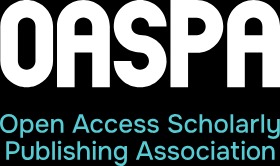Effect of the Developmental Stage of Microspores, Growth Regulator and Medium type on Callus indication from Broad bean Vicia faba Anthers Culture
DOI:
https://doi.org/10.24126/jobrc.2012.6.2.231Keywords:
Microspores developmental stage, callus, SH medium, faba bean, casein hydrolysate, anther cultureAbstract
anthers were taken from bean flower buds of the variety Aquadlce and microspore developmental stages were determined according to flower bud sizes. Anthers were cultured on modified Schenk and Hildebrandt medium (SH) supplemented with EDTA ferric monosodium salt to the SH medium which was taken from formulation of Murashige and Skoog (MS), casein hydrolysate 400 mg/l, some amino acids, and different combinations of growth regulators; kinetin and naphthalene acetic acid and 2, 4- dichlorophenoxyacetic acid (Kin + NAA + 2, 4-D) and benzyl adenine (BA + NAA + 2,4-D) in different concentrations. The combination (BA + NAA + 2, 4-D) used with flower bud sizes (7.1-8) mm, containing uninucleate microspores, gave better callus induction (50%). It was also found that the concentrations [1.0, 2.0] mg/l of ascorbic acid were better to prevent the accumulation of phenols in the medium than the concentration [0.0] mg/l. The cytological analysis revealed that the number of chromosomes in callus induced from flower bud sizes (2.5-6.4) mm contained diploid (2n=12 chromosomes), whereas chromosomes in callus induced from flower bud sizes (6.5-8.0) mm contained haploid (n=6 chromosomes) with the presence of some diploid cells (12 chromosomes).
Downloads
Published
How to Cite
Issue
Section
License
This is an Open Access article distributed under the terms of the creative commons Attribution (CC BY) 4.0 license which permits unrestricted use, distribution, and reproduction in any medium or format, and to alter, transform, or build upon the material, including for commercial use, providing the original author is credited.











